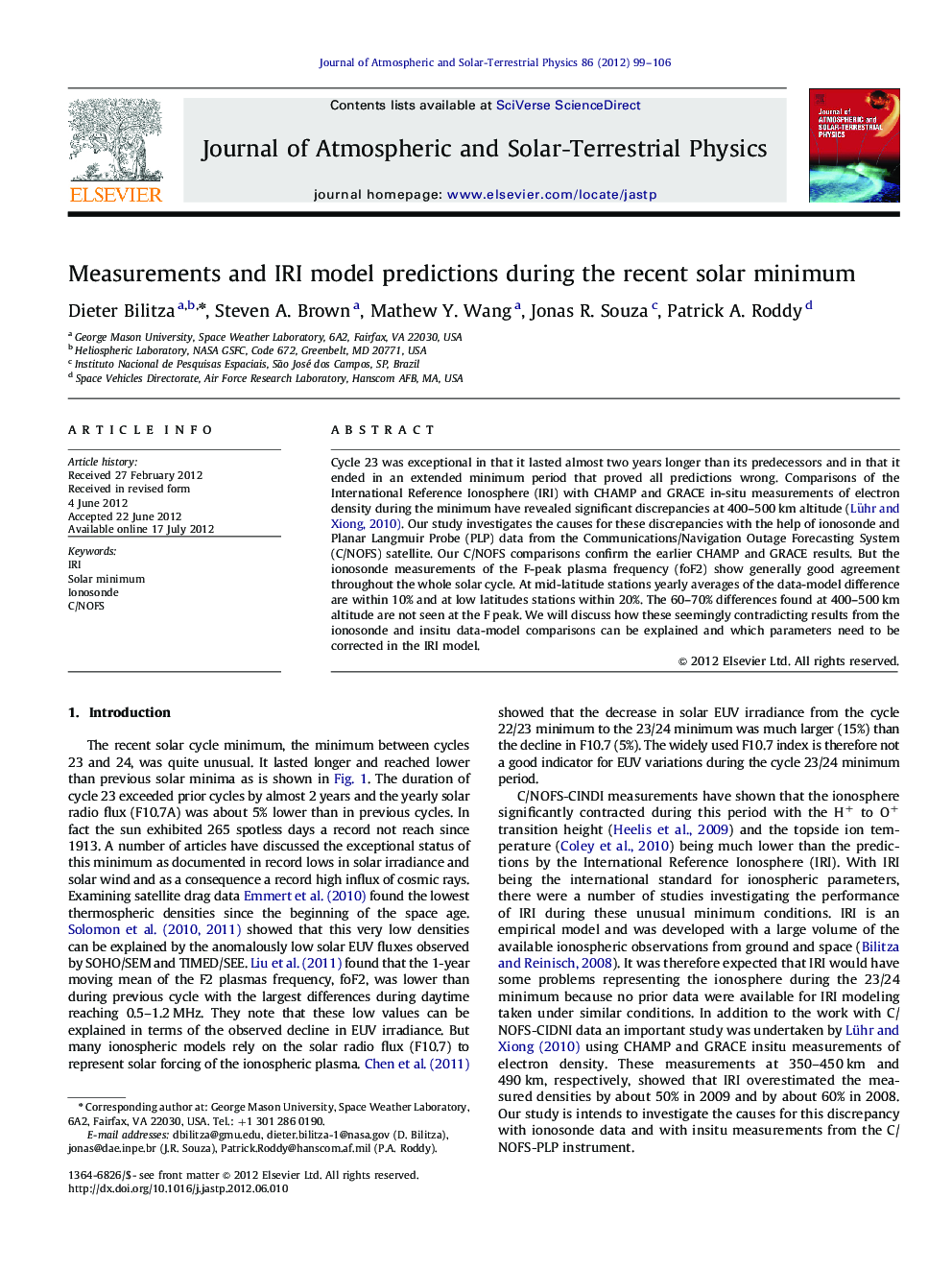| Article ID | Journal | Published Year | Pages | File Type |
|---|---|---|---|---|
| 1776862 | Journal of Atmospheric and Solar-Terrestrial Physics | 2012 | 8 Pages |
Cycle 23 was exceptional in that it lasted almost two years longer than its predecessors and in that it ended in an extended minimum period that proved all predictions wrong. Comparisons of the International Reference Ionosphere (IRI) with CHAMP and GRACE in-situ measurements of electron density during the minimum have revealed significant discrepancies at 400–500 km altitude (Lühr and Xiong, 2010). Our study investigates the causes for these discrepancies with the help of ionosonde and Planar Langmuir Probe (PLP) data from the Communications/Navigation Outage Forecasting System (C/NOFS) satellite. Our C/NOFS comparisons confirm the earlier CHAMP and GRACE results. But the ionosonde measurements of the F-peak plasma frequency (foF2) show generally good agreement throughout the whole solar cycle. At mid-latitude stations yearly averages of the data-model difference are within 10% and at low latitudes stations within 20%. The 60–70% differences found at 400–500 km altitude are not seen at the F peak. We will discuss how these seemingly contradicting results from the ionosonde and insitu data-model comparisons can be explained and which parameters need to be corrected in the IRI model.
► We compare ionosonde and C/NOFS PLP measurements with IRI model at solar minimum. ► Agreement is good at the F peak, but large discrepancies are seen higher up. ► A possible explanation is an overestimation of the F peak height by IRI.
